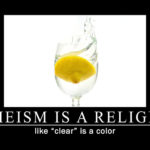Chrysoberyl Cat’s Eye Gemstone
Chrysoberyl Cat’s Eyes are one of the most valuable gemstones. Yet they are so rare in good size and fine quality that few other gems can compare as a gemstone investment. In this day and age of extraordinary laboratory grown crystal impersonations, the Chrysoberyl Cat’s Eye stands out as a gem that has not been replicated by clever crystal growing technology.
Chrysoberyl term originates from the greek words chrysos and beryllos, meaning “a gold-white spar”. Generally chrysoberyl is confused with beryl which is a completely different mineral. Chrysoberyl is the third-hardest natural gemstone and lies between Corundum and Topaz on Moh’s Hardness scale having hardness of 8.5. Cat’s Eye or Cymophane is a gem variety of chrysoberyl which shows the optical effect known as Cat’s Eye effect or Chatoyancy.
Cause of Cat’s Eye Effect or Chatoyancy
Cat’s Eye effect is seen in chrysoberyl containing microscopic tube-like cavities or needlelike inclusions of rutile which occur parallel to the c-axis of the crystal. When these are cut en cabochon perpendicular to the c-axis, a single ray of light can be seen to move on the surface. This effect is termed as Chatoyancy. Chatoyancy comes from the French ‘chat’ (for cat) and ‘oeil’ (for eye). Chrysoberyls lacking the cat’s eye effect are mostly faceted, Cat’s eyes are always cut into cabochons, since only tall, rounded shapes render the line of the eye properly visible.
History of Cat’s Eye
Cat’s eye became popular since the end of the 19th century when it was given as engagement token by Duke of Connaught. This greatly increased its value as a gemstone. The increased demand in turn created an intensified search for it in Ceylon.
Sources of Chrysoberyl
Chrysoberyl (BeAl2O4) occurs most often in granitic rocks, pegmatites and mica schists. It has also been found in contact metamorphic deposits of dolomitic marble with corundum, and in fluorine skarns. Most chrysoberyl is recovered from river sands and gravels. The major Sources of Chrysoberyl are Ceylon and Brazil. There have been recent sources found in India. Ural Mountains, Russia, and Burma are some other notable sources of chrysoberyl.
Astrological and Other Benefits
The astrological sign of cat’s-eye chrysoberyl is Gemini. Cat’s Eye is said to help balance one’s emotions, and to make one feel at ease with oneself as well as with others. It is also said to stimulate one’s problem solving capabilities by providing a more in-depth understanding of the details involved. It is also said to provide relief from feminine discomforts and intestinal maladies.
How to Wear Cat’s Eye
A cat’s eye should be set in steel or gold, or even platinum, on the small finger of the left hand, at midnight on Thursday, when the Moon is waxing.
The stone should weigh more than three carats, but five carats or more is better.
Depending on a person’s occupation, different shades of cat’s eye should be worn. A priest, teacher, scientist, or intellectual should wear a honey yellow stone. A ruler, soldier, or administrator should wear a honey brown stone. A businessman, farmer, or banker should wear a honey green stone. A laborer, artisan, or servant should wear a dark green stone.
Care & Cleaning
Clean with a soft polishing cloth in plain water. Commercial jewelry cleaner can damage the polish of the gem. Do not soak. Also avoid sudden temperature changes.
Tests for Identification of Real Cat’s Eye
- A Cat’s eye is a very hard stone and its surface can be scratched only by a Diamond or a Ruby or Sapphire. Cat’s Eye can easily scratch glass.
- If a real cat’s eye gemstone is put in a dark place, it shines like the eyes of a cat.
- If a real cat’s eye gemstone is rubbed against a cloth, its brilliance increases.
How to Choose
Fine cat’s eyes should be of a distinctive color and be as transparent as possible. The most popular ones are those of a beautiful honey yellow and those with fine green tones. It should have a very good cat’s eye effect which should be also visible in low light. Translucent varieties are more sought after than opaque varieties and command a higher price.
Cat’s Eye Properties
- Hardness: 8.5 on Mohs scale of hardness
- Index of refraction: 1.744 – 1.770
- Colors: Green, Brown, Yellow. The variety Alexandrite Cat’s Eye changes color: green in daylight and red-violet in incandescent light and is very highly priced.
- Pleochroism: weak, X= slightly rose, Y= greenish yellow, Z= pale green
- Specific gravity: 3.68 – 3.75



